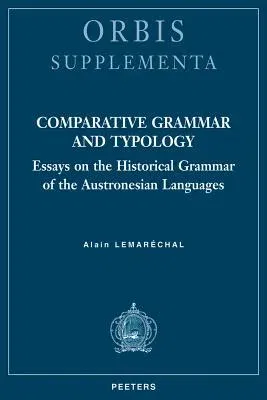The comparative grammar of the Austronesian languages underwent an
unprecedented change immediately after World War 2, owing to the use of
lexicostatistics, the appeal to migration theory and the like, and also
because of the idea of Formosa being the cradle of the language family.
The present book is essentially an attempt at answering the following
question: What would the comparative grammar of Austronesian look like
in the absence of speculation on speaker migrations, and in the absence
of the so-called data produced by lexicostatistics and glottochronology?
Whereas typology is unable to offer the proof that a given language
belongs to a group or subgroup of languages, grammaticalization theory
can say whether a given state A may have preceded a state B or the
reverse, and solid arguments are needed to propose a relative chronology
between events that would be improbable, or even exceptional, in terms
of the typology of linguistic change. This book revisits central issues
of the comparative grammar of Austronesian languages from this angle,
such as the history of person markers, particularly in the 2nd person,
the genesis of the so-called focus verbal voice system and the typology
of sentence structures. There is nothing in these domains that supports
the supposition that Proto-Austronesian was very similar to the Formosan
languages.

